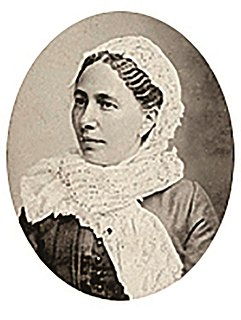Related Research Articles

Joan of Valois was a Countess consort of Hainaut, Holland, and Zeeland, by marriage to William I, Count of Hainaut. She acted as regent of Hainaut and Holland several times during the absence of her spouse, and she also acted as a political mediator.

Louise Juliana of Orange-Nassau was a countess consort of the Palatinate by marriage to Frederick IV, Elector Palatine, and took part in the regency government of her son between 1610 and 1614. She also acted as a mediator between the king of Sweden and the elector of Brandenburg in 1631.

Countess Charlotte Brabantina of Nassau was the fifth daughter of William the Silent and his third spouse, Charlotte of Bourbon. She lived in her life at the French royal court and performed many successful assignments as a mediator.

Henriette Catherine of Nassau was princess consort of Anhalt-Dessau by marriage to John George II, Prince of Anhalt-Dessau, and regent of Anhalt-Dessau from 1693 to 1698 during the minority of her son Leopold I, Prince of Anhalt-Dessau.
Mathilde of Brabant also called Machteld was Countess of Holland by marriage to Floris IV, Count of Holland. She was regent of Holland and Zeeland in 1234–1235.
Anna Maria de Bruyn was a Dutch stage actress and ballet dancer.

Elisabeth Wandscherer was a Dutch Anabaptist.
Susanna du Plessis (1739–1795) was a plantation owner in Dutch Surinam. She is a legendary figure in the history of Surinam, where she has become a metaphor of a cruel and sadistic slave owner. She is the subject of songs, plays, fairy tales and legends as well as books.
Maria ter Meetelen, was a Dutch writer, famous for writing an autobiographic slave narrative of her years as a slave in Morocco, having been taken captive by Corsair pirates. Her biography is considered to be a valuable witness statement of the life of a former slave (1748).
Marretje Arents, known as Mat van den Nieuwendijk, and het limoenwijf, was a Dutch fishwife and rebellion leader, sentenced to death as one of the three instigators and leaders responsible for the so-called Pachter riots of 1748.
Maria was a Curaçaoan slave and leader of a slave rebellion on Curaçao in the Dutch West Indies in 1716.

Béatrix de Cusance, Baroness of Belvoir, was the second wife of Charles IV, former reigning Duke of Lorraine. She was a correspondent of Constantijn Huygens.

Princess Frederica Louise Wilhelmina of Orange-Nassau was a Hereditary Princess of Brunswick; married 14 October 1790 to Hereditary Prince Charles George August of Brunswick-Wolfenbüttel, son of Charles William Ferdinand, Duke of Brunswick-Wolfenbüttel. She was known in the family as "Loulou".
Catharina Egges, was a Dutch publisher. Between 1781 and 1824, she managed the publishing company Algemeene bibliotheek.
Catharina Johanna Koek (1763–1843), was a Dutch governor's wife. She is depicted in history as a typical example of the Dutch colonial customs in Dutch East Indies and how it was viewed by Europeans.
Marietje Jan de Gortersdochter was a Dutch Anabaptist. She is known in history as a martyr of the Anabaptist faith and the mother of the Anabaptist leader David Joris. She was married to the merchant Joris van Amersfoort. She was executed by decapitation in Delft after banned books had been found among her possessions.

Wilhelmina van Idsinga also Wilhelmina Geertruida of Idsinga, (1788–1819) was a Dutch painter. She was born in Leeuwarden.

Jacoba Rauwerda (1835–1919) was a Dutch brothel manager. She was the owner and manager of the most famous brothel in 19th-century Amsterdam, the Maison Weinthal, between 1877 and 1902.
Catharina Petit (1660–1740) was a Dutch stage actor.
Machteld Aelbrechtsdr van Wouw (1580-1662) was a Dutch printer and publisher.
References
- ↑ https://resources.huygens.knaw.nl/vrouwenlexicon/lemmata/data/Harkema
- ↑ djr (2018-10-04). "Digitaal Vrouwenlexicon van Nederland". resources.huygens.knaw.nl (in Dutch). Retrieved 2019-02-13.